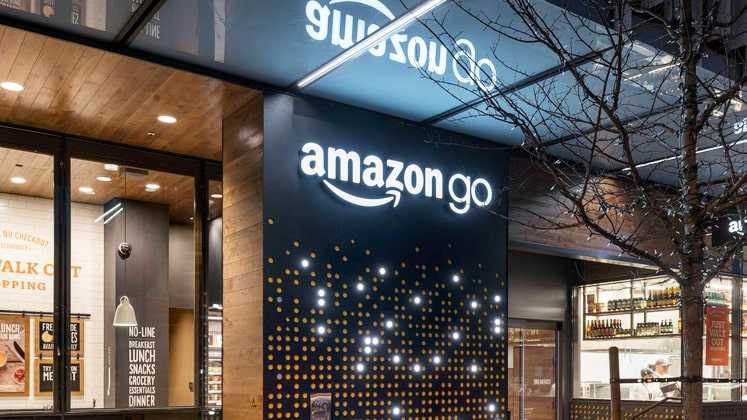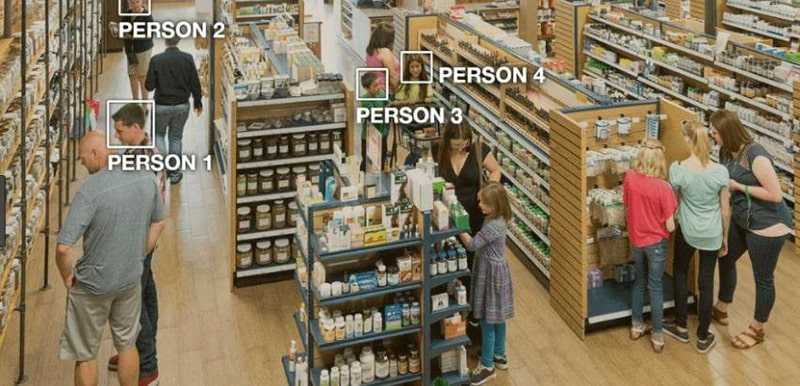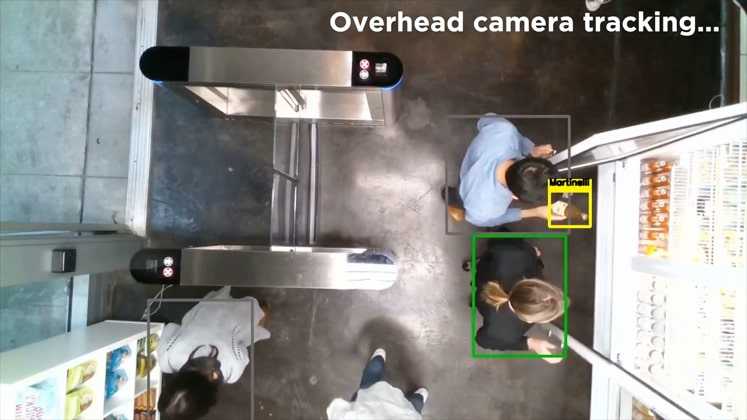
Checkout-free stores are set to revolutionise offline retailing allowing shoppers to enter the store, buy products and then leave without having to pay. The technology would provide a seamless shopping experience, motivating shoppers to shop in store. This article will explore the technologies that could assist the retailers with a cashless store!
Cashless S tores: O ffline S hopping E xperience is Now a Delight!
We all have waited in long queues outside trial rooms and payment counters. With the emergence of e-commerce players delivering the products at the doorsteps, the customers have got a new level of comfort and opportunity to save time. The saved time can be utilised in exploring products which creates a huge challenge for the offline retailers. Besides, it also eliminates any human interaction with the customers, which sometimes turns out to be a bad experience for the customers if the staff is not very well trained or due to any other reason.
Technology innovations have grown up to a level where the idea of a store that does not require the customers to pay has cropped up. The customers can now shop and leave the store without having to make payment for their purchase. Amazon introduced this revolutionary concept by setting up ‘Amazon Go’ stores that allows the customers to enter the store, buy products and then leave the store without making any payment. The Just Walk Out Technology shopping experience as named by Amazon saves customers from standing in the queue to scan their products and make payments. The technology works with Amazon Go application and uses technologies like camera vision, sensor fusion and deep learning.
The application detects the products when picked up from the shelves and adds them into the customers’ virtual cart, and when kept back, the product is removed from the cart. When the customer has done shopping and leaves the store, his/her amazon account is charged and the customer is sent a receipt.
The installed application is equipped with technologies such as cameras, sensors and RFID that identify shoppers and their items. The combination of all these technologies ensures the safety of the store as the camera takes the photograph of people who enter the store when items are removed from the shelves and they leave with the items in their hand. The facial recognition technology includes user information and other details like height and weight, user biometrics, username, password and the user purchase history.
This grocery store concept gave way to the implementation of the technology in many other fields including apparel. This will surely create motivation and excitement for the shoppers to visit the stores and buy products with the privilege of getting to touch and feel the product then and there itself. Today the market has many solutions available for creating this experience in a store. Team StitchWorld further explores some of the leading technology suppliers that are delivering such technology.
Walk In, Take Things, Walk Out: Standard Cognition

The AI-powered checkouts use camera and algorithm to allow customers to shop and pay without scanning or stopping to check out. They only utilise a camera and algorithm to make the technology operational. When the customers walk in to the store, the overhead cameras identify them by shape and movement and no facial recognition is used to protect the privacy of the customers. The customers will have to open the company’s iOS or Android supported app and a special light pattern flashes allowing the cameras to tie customers to the account and payment method. Finally, the customers are allowed to grab whatever they need and leave the store. Eliminating the need to checkout, the system even works without an app through the installed Kiosk screen. The camera of the screen identifies what all items did the customer choose and accepts the payment through credit cards or cash.
The system provides benefits like privacy, scalability, experience, flexibility and insights. The installation of the technology does not need any time to hold the business as a part of the transformation as it does not require to set up any new shelf sensors, RFID or packaging changes. It just consists of overhead cameras which are simple and quick to install, and also ensures a seamless experience to the customer, thus delivering a better experience to its customers. Apart from all these, the retailers are benefited with detailed insight into the product performance, minimising loss prevention and providing real-time inventory snapshots.
Keeping privacy as the major focus, the technology does not include any use of the facial recognition system which ensures to maintain the privacy of the customers. It cannot identify the customers outside the store, and restricts only to visually identify the customers only if the customers return to the same store. It ensures that the data collected of the customers are safe with the company and contains the footage of customers shopping. This is used to review any changes to customers’ virtual basket that they might request, as well as for security footage to be used by the retailer. This footage is not stored permanently and is deleted after 7 days, which is also the time allowed to contest an item on receipts. The only type of data that the system stores permanently and does not delete until prompted by the customers is the information about what items the customers have picked up and put back which is used to calculate the virtual basket.
The Checkout-Free Platform: Zippin

Zippin, the checkout-free technology uses AI, machine learning and sensor fusion technology for creating a seamless shopping experience. The idea with the development of the technology was to banish checkout lines and self-scanners so that the shoppers can move in and out with their purchase.
Zippin uses a combination of visual cognition technology with machine learning to accurately account for shoppers’ behaviour and product whereabouts in-store. This is done through overhead cameras with product tracking and using smart shelf-sensors for the highest level of accuracy. The technology works through an app that the customers can easily download in their phones and they only have to enter their billing information. The app then generates a unique QR code which the customers scan at a turnstile to enter the store. Once the customers are inside the store, they are allowed to pick up and put back whatever they want and pay for the product that they buy. The technology works by capturing every move of the customers; it keeps track of the products that customers pick up and add to their virtual baskets and charges them online.
For the security of the customers, Zippin does not use any biometric to recognise the customers. It only uses overhead cameras to track the customers who appear as dots on the consolidated store map. It visually recognises the products picked and returned to the shelves by tracking the shoppers’ limbs and through geometric computer vision.
The weight sensors track the changes in the weight of the shelves, which helps the system identify that an item has been removed or replaced.
The implementation of the technology also helps the retailers in real-time inventory tracking, which keeps the customers and retailers well-informed about the product’s availability and also provides out-of-stock alerts to the retailers. It gives intelligent in-store analytics, briefing retailers of the customers’ activities in the store and provides better accessibility to products. It also provides details of the time spent looking at a product, how the shopper looked at the marketing signage, the product that was picked or that was put back, etc.
Zippin also allows the stores to act as micro-fulfillment centre for e-commerce for a truly multichannel experience. The software allows easy restocking of resources as it provides verification and stock transfer automatically. The product just needs to be placed on the shelves.
The added feature of the software includes support of high crowd density that allows the maximum number of fire department codes permit in any store. This eases out the process maintaining a higher accuracy level of the stocks and items even when the store is crowded. It has easy installation requirements and can work with existing store formats, shelving and coolers and standard power supply and internet connection. It supports the installations of weight sensors and is designed to help the shoppers and staff discover the product easily in the store. It provides a higher accuracy level as the technology relies on just one sensor which is a camera. The source of information are the camera and weight-sensitive shelf sensors to offer two independent sources of truth and optimal accuracy for what product has been selected. It also needs no special server and desktop installation removing any extra expenses attached to the installations.
The Perks of Frictionless Shopping
Checkout-free shopping provides an added advantage over the terms like ‘scan’ and ‘go’ and ‘self checkout’ technology. Checkout-free stores just mean entering a store and putting the products in the basket and leaving the store. The flexibility and convenience that the customers have discovered in online shopping surely need to be addressed by offline retailers.
However, bricks-and-mortar retail is still preferred by the customers and it accounts for nearly 80 per cent of all retail transactions as it fulfils the need for immediate product ownership and checking a product physically. Imagine a store where the customers will just have to be present to explore the product and own it without having to stand in the long queue, make payment and interact with the staff. This will surely transform the retail industry in coming times.
The technology, already in its starting phase, may soon take over the market as it will not only offer a frictionless shopping experience to the customers, but will also offer retailers added benefits such as in-store analytics and real-time inventory updates. The early adopters of the technology will have significant lead as they can rapidly learn from customer experience, feedback and a large amount of customer data available to refine and fine-tune the system’s AI algorithms.

Post a Comment